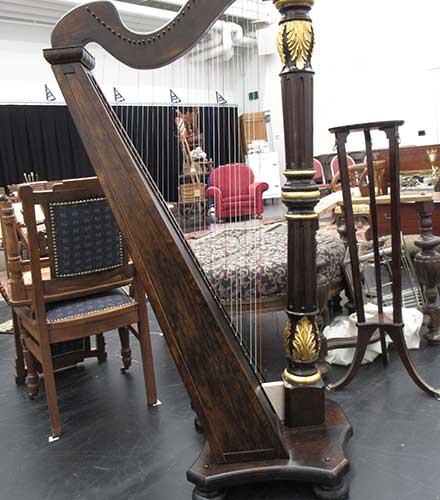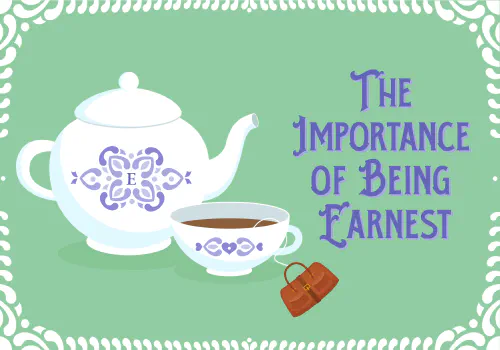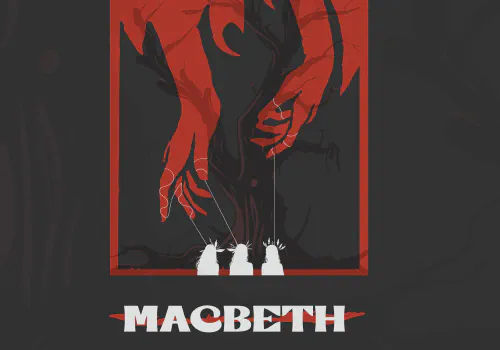The Price: It's Just Stuff, Isn't It?

By Kathryn Neves
This season, Arthur Miller’s The Price will give us a glimpse of just what it is to be human. It’s an astounding play full of universal themes and archetypes, but one of the more fascinating subjects that the play addresses is the idea of physical objects—the way we attach emotion to things and materials. Through the characters’ attachment to various items in the play, we get a better look at who they are and the ways that they deal with the complicated relationships they have. This theme raises an interesting question: Why do we attach emotion to things? Afterall, it’s just stuff, isn’t it?
The answer to this can perhaps be found in social psychology. One study argues that this attachment can arise due to insecure personal relationships: “People attach to objects, at least in part, to compensate for the perception that close others are insufficiently reliable sources of security” (Keefer, Lucas A., Mark J. Landau, Zachary K. Rothschild, and Daniel Sullivan, “Attachment to Objects as Compensation for Close Others’ Perceived Unreliability” [Journal of Experimental Social Psychology 48, 2012], 912). This idea comes through pretty clearly in The Price. Throughout the play, we learn that Victor, a policeman who regrets not attending university, resents nearly everyone in his life—most especially his brother Walter and his late father. Though Miller doesn’t say as much, it’s clear that the emotional attachment most family members have with each other is absent in this particular family. Near the end of the play, Walter proclaims: “All that is standing between us now—an illusion. . . . I only saw then what you see now—there was nothing here to betray. . . . It is all an illusion and if you could walk through it, we could meet” (Miller, 438). It becomes obvious throughout the play that the family dynamic was and still is dysfunctional. We learn of different lies and betrayals, we learn old family secrets, and we see age-old resentments that have torn the family apart.
Keefer et al. claim that “people whose attachment figures consistently reject them in times of need may learn that relying on others is not an effective way to manage distress. People typically respond to this situation with attachment avoidance: maintaining independence and emotional distance from close others to avoid rejection” (912). Again, we can see this in Victor and Walter. Because each of them feels he cannot rely on the other, each has spent years without speaking to each other, trying to live completely independent of each other. This leads them to bond with the furniture and other objects in their father’s house.
“Attachment to material objects can similarly serve to compensate for the threat to attachment security posed by close others’ perceived unreliability” (913). In other words, the items that Victor and Walter are trying to sell have become substitutes for real familial love. Victor explains it himself early on in the play: “This whole thing— it hit me like some kind of craziness. Piling up all this stuff here like it was made of gold. He half-laughs, almost embarrassed. I brought up every stick; damn near saved the carpet tacks” (Miller, 360).
As Victor and Walter prepare to sell their parents’ old belongings, there are several items that seem to take on a greater meaning as the play goes along. Their mother’s harp and their father’s chair are particularly important in the script. It’s almost as though each of those items has come to represent the family as it used to be, and the relationships that the family used to share. For instance, Miller focuses a lot on the harp throughout the play. Both in dialogue and in stage directions, it’s clear that the harp is more than just a harp—it’s a representation of their deceased mother, and an embodiment of old relationships that have either completely changed or been destroyed altogether. “My mother’d play for hours down in the library,” Victor says, “Which is peculiar, because a harp is so soft. But it penetrates, I guess” (Miller, 363). Victor and Walter both speak of the harp with a certain reverence, as though they’re remembering not just the harp, but all the memories and associations that surround it. However, even though the harp is clearly important to each of them, the object itself is not enough to make up for the emotional distance they have with their family Victor explains: “It’s odd. . . . Like the harp! I can almost hear the music. . . . But I can never see her face. Somehow. For a moment, silence, as he looks across at the harp” (Miller, 409).
Even more poignant than the harp, however, is the way that Miller treats their father’s chair throughout the script. Nearly every time someone references their late father, they point to his empty chair. The stage directions are littered with references to it. As much as the harp represents the insecure emotional attachment to their mother and their childhood in general, the father’s chair does it even more. Toward the end of the play, we learn a dark family secret about the father that has been haunting each brother for their entire lives, and the chair becomes emblematic of that insecurity. Because of their father’s secrecy and deception, neither Walter nor Victor could truly have a reliable relationship with their father: instead, these feelings of emotional attachment transferred over to the objects and the furniture kept in the old house— especially their father’s chair. Many of Walter’s lines demonstrate this really well: “I wasted thirty years protecting myself from that catastrophe. He indicates the chair: And I only got out when I saw that there was no catastrophe, there had never been” (Miller, 438). Victor even addresses the chair at one point, further solidifying the chair as a substitute for his actual father. A stage direction says “He stops; his stare is on the center chair, caught by memory; in effect, the last line was addressed to the chair” (Miller, 438).
Walter and Victor spend the play unable to truly connect with each other emotionally. Instead, they are stuck in old patterns of emotional insecurity and unreliability. Instead of connecting with each other as brothers, they—especially Victor—hold on to the sentimental attachments they have with the furniture and objects in their parents’ old home. Their refusal to face the past and instead attach themselves to material items is a poignant point that Arthur Miller makes through the play: as humans, we have a tendency to avoid emotions and relationships, and instead turn our attentions to the physical world, putting too much value on things. In the end, the character Gregory Solomon says it best: “With used furniture you cannot be emotional” (Miller 371).









